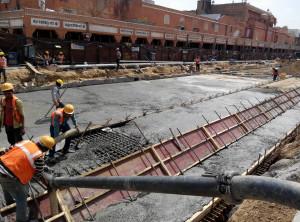Indian Labour Building Cities Globally
28th Apr 2016 Indian ConstructionFor decades, India has always been the biggest resource for the world’s skilled and unskilled labour. Countries within Asia and across the globe have seen a major migration of Indian skilled and unskilled manpower utilized in its workforce.
 As we turn to another Labour Day celebration in India on May 1st, it’s time we look at the construction Industry and how Indian labour has changed the skyline of India and especially global metropolises.
As we turn to another Labour Day celebration in India on May 1st, it’s time we look at the construction Industry and how Indian labour has changed the skyline of India and especially global metropolises.
Migration of unskilled and semi-skilled labour to work as contract labour is the most dominant form of international labour flowing out of India to the rest of the world. Of the 14 million total Indian migrant workers currently living and working abroad, nearly half are given jobs in a Middle East and North African (MENA) countries. For a bit of context, in 2013 Indian worker populations were highest in the UAE (2,852,207), Saudi Arabia (1,761,857), and Kuwait (730,558). Migrant workers contributed to the remittances of approximately USD$ 70 billion globally in 2012, with that number only continuing to grow.
These numbers are heavily skewed towards the construction industry with the GCC and Singapore being the highest retainer of the labour. These countries have always been infrastructure heavy and have planned cities that will fulfil the needs of the population for the next few decades at the least. Where academicians build theories on the rise of the Indian labour globally, the demand only seems to grow by the day.
Wrapping this all up in the context of our Labour Day, the next time you see or imagine the towering skylines of cities like Dubai, Singapore, Malaysia or even Australia, imagine just how different they would be without the Indian migrant labourer.
Happy Labour Day!









 SMART CONCRETE®
SMART CONCRETE®